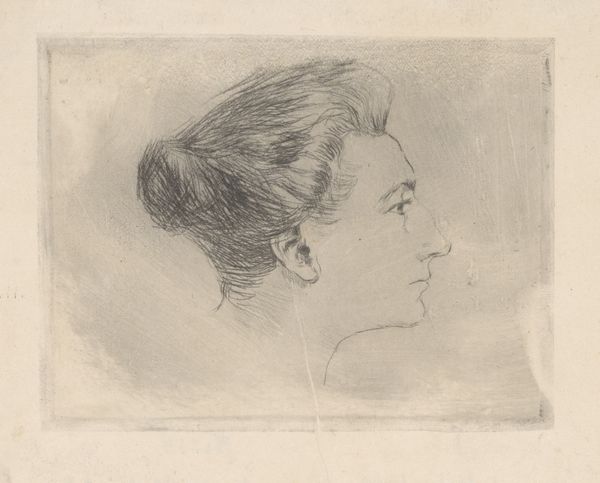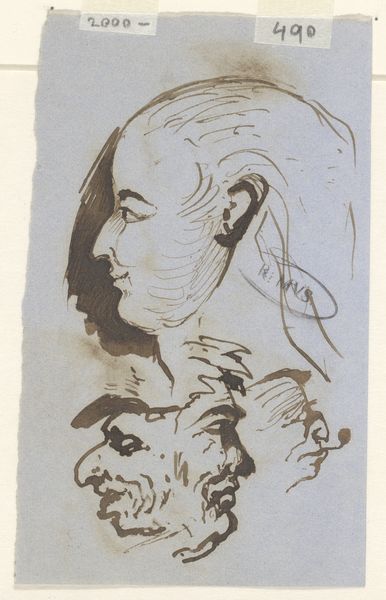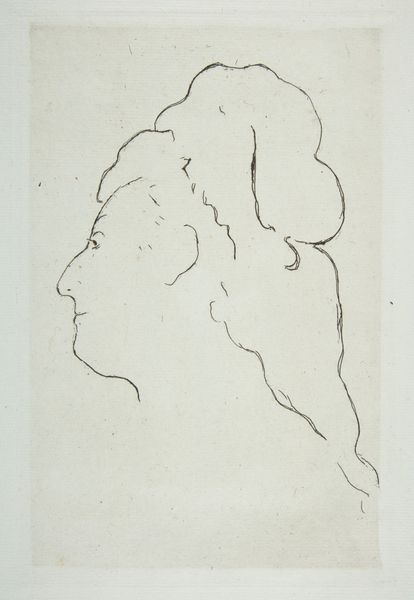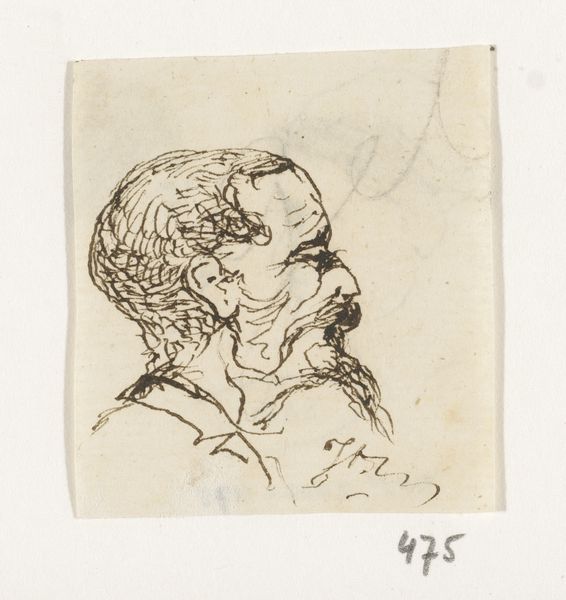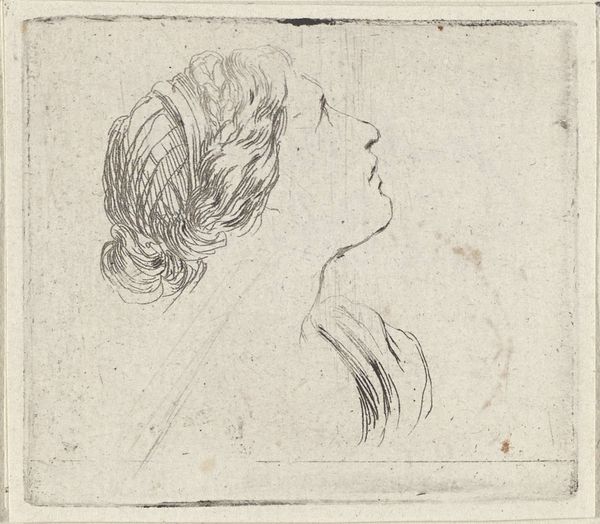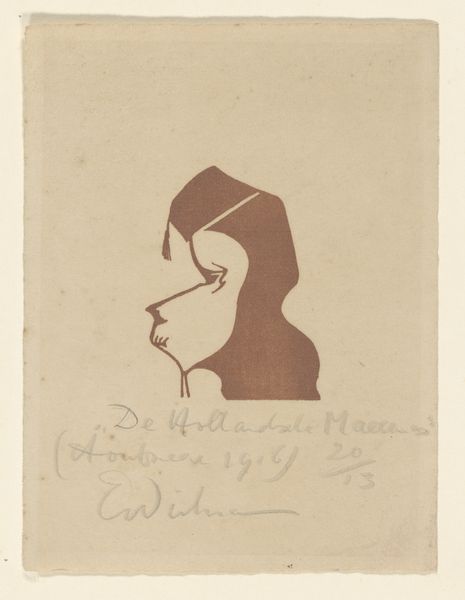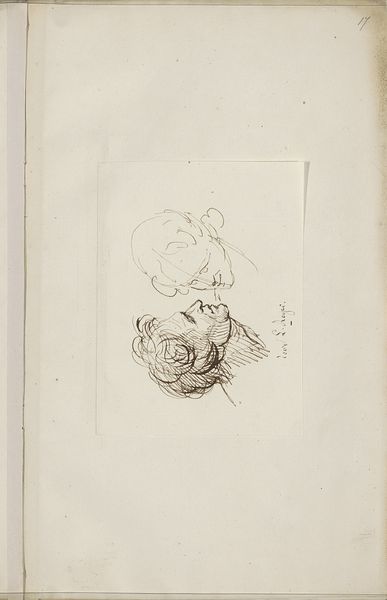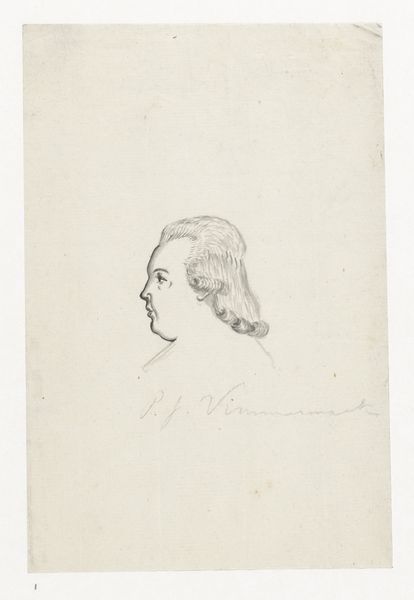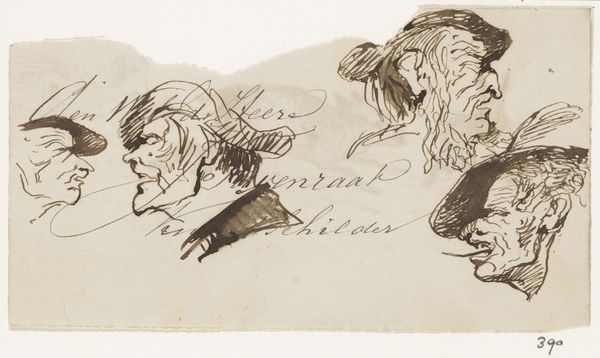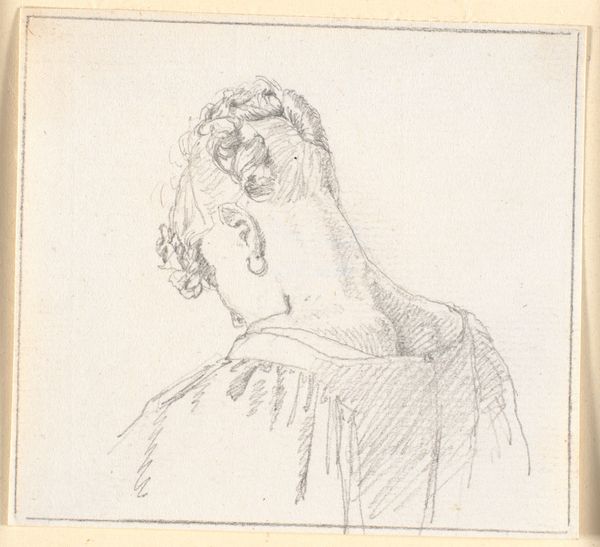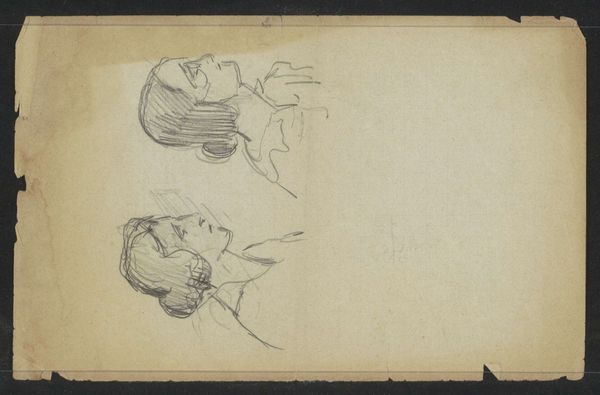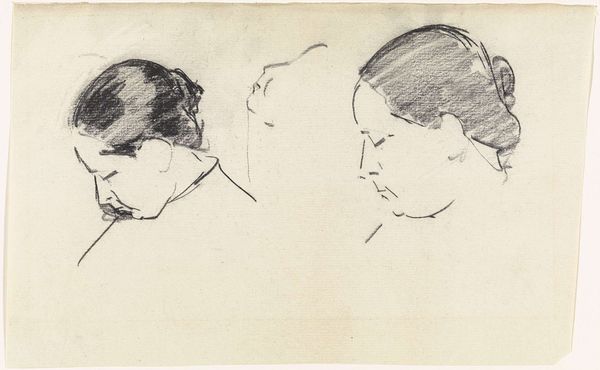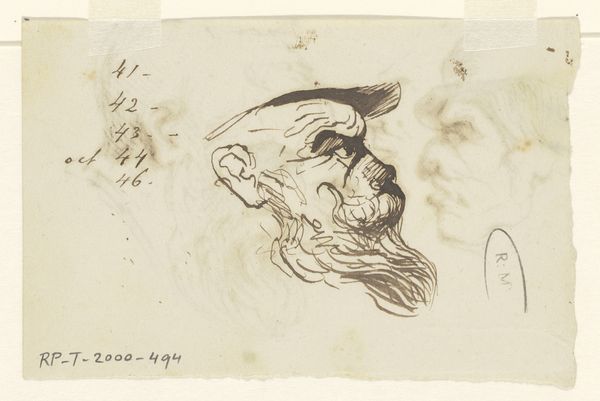
drawing, ink, pen
#
portrait
#
drawing
#
comic strip sketch
#
imaginative character sketch
#
cartoon sketch
#
figuration
#
personal sketchbook
#
ink
#
idea generation sketch
#
ink drawing experimentation
#
pen-ink sketch
#
sketchbook drawing
#
pen
#
storyboard and sketchbook work
#
sketchbook art
Dimensions: height 47 mm, width 55 mm
Copyright: Rijks Museum: Open Domain
Editor: Here we have "Kop," a pen and ink drawing by Johannes Tavenraat, made sometime between 1840 and 1880. It's a quick sketch of a woman’s head, seen in profile. What immediately strikes me is its simplicity, almost like a caricature. What do you see in this piece? Curator: Beyond its simple aesthetic, I see a study in the representation of women during this period. This was a time when artistic portrayals of women, often confined to domestic roles, began to be subtly questioned. Considering Tavenraat's broader work, does this sketch challenge or reinforce conventional beauty standards and social expectations of women? How does the unfinished quality contribute to your interpretation? Editor: That's interesting, I hadn’t thought of it that way. The loose lines and unfinished feel almost give it a sense of immediacy, a fleeting impression. Perhaps the artist wasn't aiming for idealization at all? Curator: Precisely! And that refusal of idealization can be powerful. Think about the lack of detail – how does that encourage viewers to project their own interpretations onto the figure? The period also saw a rising middle class; do you see reflections of class in the work through its portrayal of women's status and lived experience? Editor: It seems that Tavenraat invites viewers to participate in defining this woman’s identity, moving away from prescriptive representation. Considering what you’ve said, this challenges my initial read as a simple caricature and hints at something more complex! Curator: Indeed! This "simple" sketch becomes a starting point for larger discussions around gender, class, and representation. Seeing art as a reflection of power structures opens up fascinating insights. Editor: Thanks. I see now it is so much more than just a sketch, it’s a small window into the social and political landscape of the 19th century.
Comments
No comments
Be the first to comment and join the conversation on the ultimate creative platform.
